Temperature mapping: Tips, frameworks, and pitfalls

Jakob Konradsen
From planning and conducting your temperature mapping study to the frequent mistakes, hidden costs, and operational stumbling blocks that you could be avoiding – here are the guidelines for efficient, reliable mapping in GxP.
On this page, you can delve into:
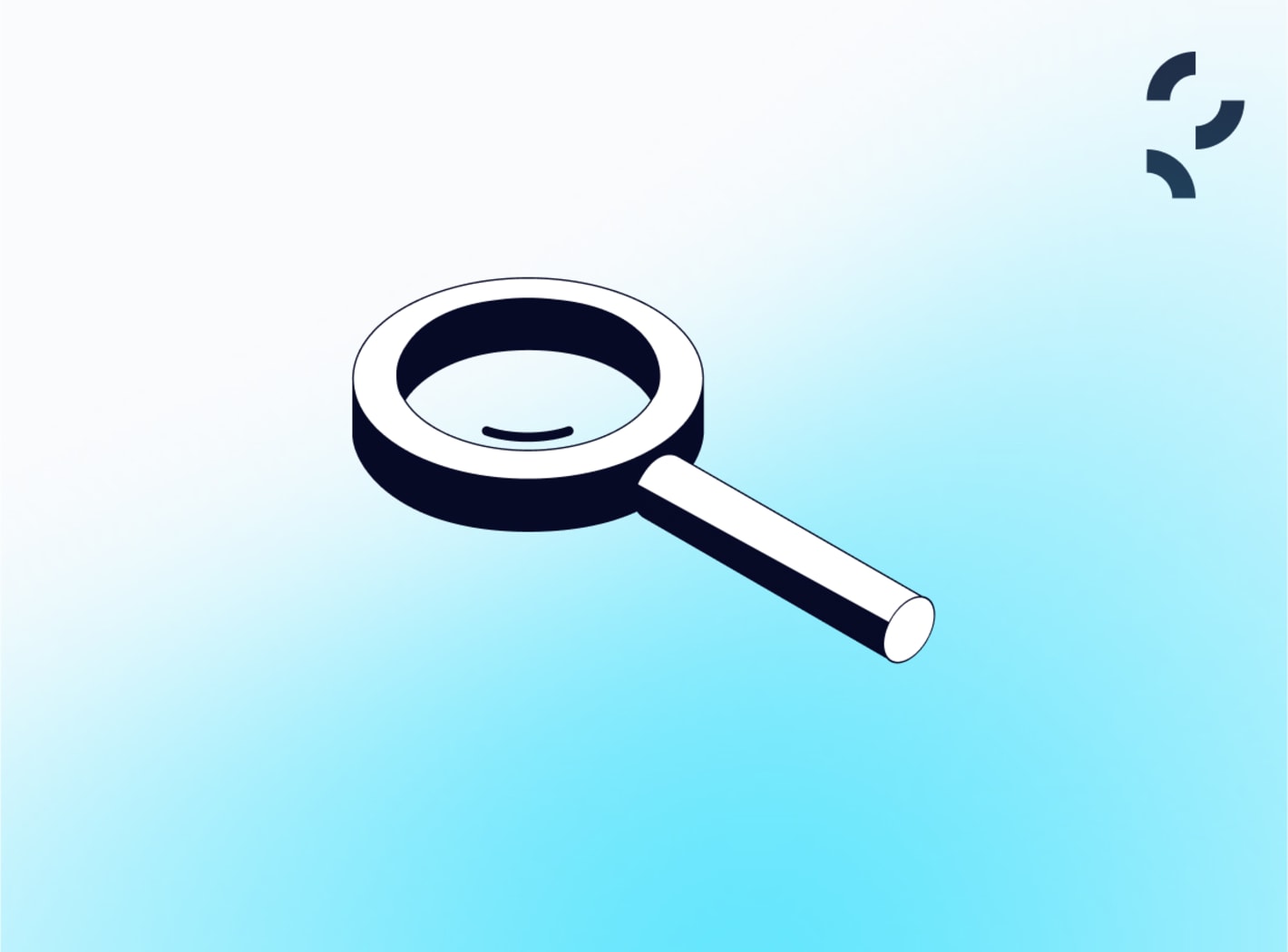
What is temperature mapping?
Temperature mapping or thermal mapping is the process of testing the performance of your temperature-controlled equipment or facility. The goal is to validate that the unit can maintain temperatures within the required range during various stress tests such as OQ/PQ stability tests, door opening tests, and power failure tests.
It is a critical process for any industry handling temperature-sensitive material – from pharmaceutial temperature mapping and biotech to logistics storage of sensitive products. These industries each face unique challenges in ensuring the safety and efficacy of sensitive products and samples, and to address these, mapping studies play a fundamental role.
The structure of temperature mapping in GxP
A temperature mapping study establishes the temperature distribution in facilities and equipment, generally used to store time- and temperature sensitive assets.
The temperature mapping procedures should:
- Create an overview of the temperature distribution throughout the area to be mapped during empty and full conditions.
- Identify cold and hot spots, and zones which should not be used for storage.
- Demonstrate the time taken for temperatures to exceed the designated limits in the event of potential door openings and power failure.
- Be carried out periodically, to demonstrate continuing compliance.
Data collected in a temperature mapping study can provide evidence of whether the asset can be stored safely in the equipment/facility according to the acceptance criteria provided by the customer.
The mapping can later be used as a guide for the placement of data loggers for a fixed temperature monitoring system.
The temperature-mapping process has different main stages:
- Prepare a mapping protocol
- Carry out the mapping study
- Prepare a mapping report
- Implement the recommendations identified in the mapping report.
Find more details on the different stages here.
A follow-up mapping study may be needed to verify the effectiveness of recommended actions.
Why is temperature mapping needed?
It goes without saying: That storage equipment works correctly is vital to keep products and samples within safe temperature ranges. This is key to preserving their quality – and mapping is the method to confirm this. As a result, mapping is also a necessary step to meet regulations set by authorities like the FDA and EMA.
Mapping – your key to effective monitoring
Temperature mapping also benefits your temperature monitoring efforts.
How? The study reveals the most temperature-variable areas – cold spots, hot spots, and other vulnerable areas. Armed with this info, you will know exactly where to place your data loggers for the best coverage, making sure your monitoring system will catch any excursions.
But is the temperature in a controlled unit not constant?
Nope. Inside temperature-regulated spaces, the temperatures will often fluctuate by several degrees.
For instance, the temperature in your kitchen fridge can vary by as much as 5 degrees from the top to the bottom. The same principle applies to industrial fridges, freezers, incubators, and other equipment – not to talk about bigger facilities like warehouses. Therefore, temperature mapping validation is paramount to reveal areas that are unfit for storage or need special (monitoring) attention.
What is the difference between temperature mapping and validation?
In the context of temperature compliance, “validation” and “temperature mapping” are two separate – but highly linked – concepts. Let’s explore the differences between them.
The short version:
Validation focuses on evaluating the overall performance and compliance of a temperature-controlled system, ensuring it meets specified requirements. Mapping specifically examines the temperature distribution within a defined space (fridge, freezer, warehouse, etc.), providing insights into areas that may or may not be fit for storing temperature-sensitive products, placing temperature monitoring data loggers, or in other ways require attention to achieve optimal temperature control and compliance.

What is validation?
In the context of temperature compliance, validation refers to the process of verifying that a temperature-controlled system, process, or method is suitable for the intended purpose, delivers the expected results, and meets specific requirements or standards. It involves assessing whether the system is capable of maintaining temperatures within predetermined limits.
It involves assessing factors such as:
- temperature uniformity
- stability
- control accuracy
- response time
Validation is the overall process towards compliance – it contains installation, qualification, or commissioning of the equipment or systems and can be repeated periodically to ensure ongoing compliance.
Why is validation important?
Validation aims to ensure that the temperature-controlled system is reliable, accurate, and suitable for its intended purpose.
What is mapping?
The validation process typically includes various tests, measurements, and documentation to demonstrate that the system consistently operates within the desired temperature range – one of these is mapping studies.
As mentioned, mapping, also known as thermal mapping, involves the detailed measurement and analysis of temperature distribution within a defined space or area such as storage areas, warehouses, cold rooms, fridges, freezers, or transport vehicles.
The objective is to understand the temperature variations and identify potential hotspots or cold spots within the area under consideration. This is typically done using temperature data loggers or sensors placed strategically throughout the space.
How to perform temperature mapping in GxP?
Each study differs, but these are the five main steps to conducting efficient temperature mapping in GxP.
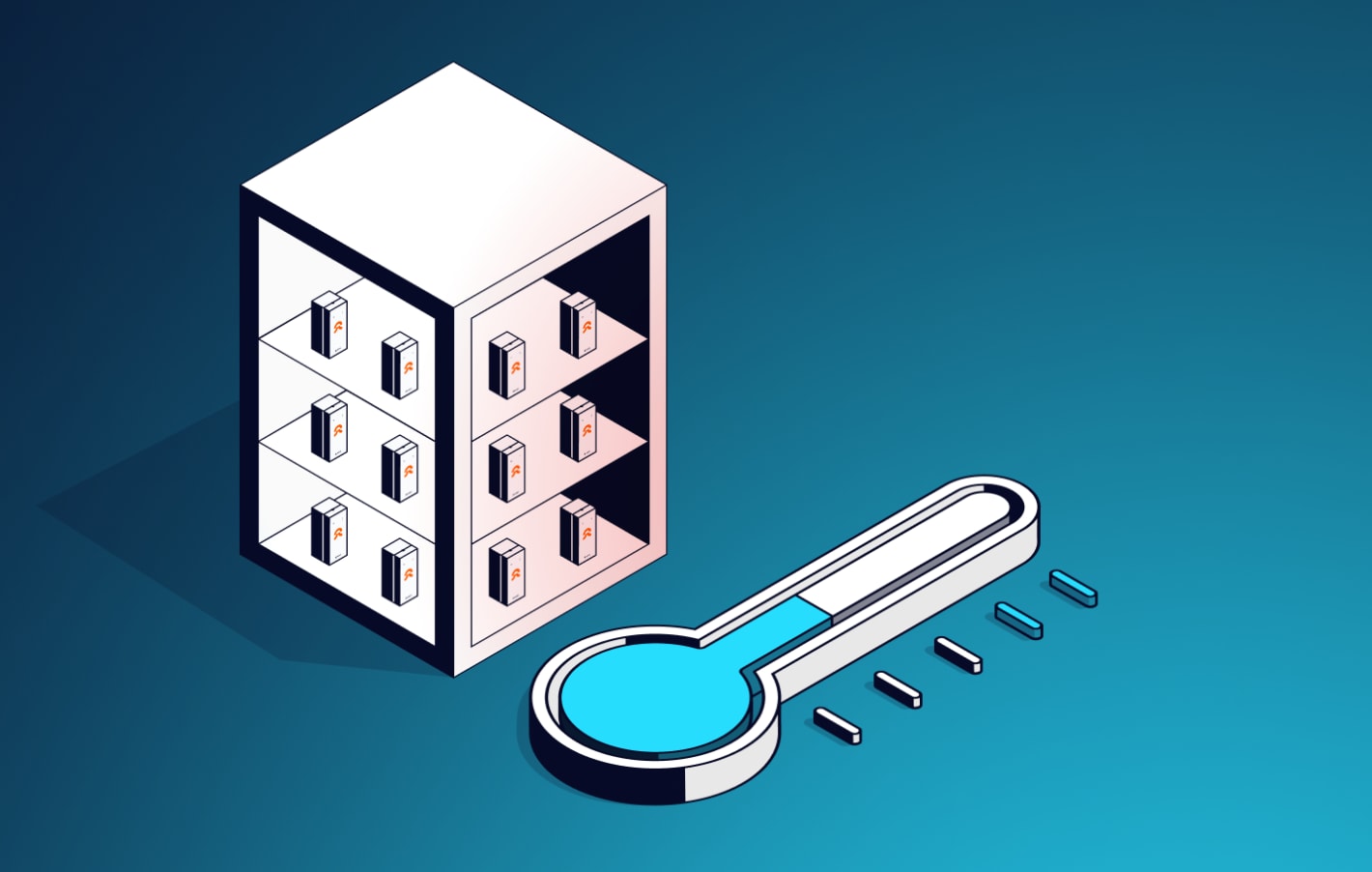
1. Train the team
An important but often down-prioritized step of temperature mapping is training everyone involved in the study. This is not just about compliance; it is about securing reliable results.
Proper training assures that the people conducting the mapping understand and are aligned on the process. It should cover the principles of thermal mapping, the use of equipment, data interpretation, and regulatory requirements.
Who needs training?
Fundamentally, all staff involved in executing or recording any part of the mapping process that will later be relied on to determine the facility's or equipment's compliance should be trained – and the training should be documented.
Often, the mapping team can manage these tasks, reducing the need to train more people.
Also read: Temperature mapping training: Who, what, and how?
2. Develop your protocol
The temperature mapping protocol is the plan that details how to conduct the mapping – and a well-designed one is the foundation of any efficient mapping study.
It will save you time, errors, and headaches down the line.
What should an effective mapping protocol entail?
Needless to say, your temperature mapping protocol should be founded in your specific conditions, but generally, a well-designed protocol includes the following:
- Approval page: Formal approval of the protocol from responsible staff from the commissioning organization and the customer.
- Acronyms and glossary: Definition of terms to avoid misunderstandings.
- References: References used in the protocol.
- Responsibilities: The roles and responsibilities of involved people.
- Purpose: The reasoning of the mapping.
- Unit description: Detailed description of the equipment or facility to help suggest data logger placement and assess risks.
- Scope: The activities and boundaries of the mapping, including the number of studies.
- Objectives: The goals vary but often include mapping variations in specific areas, cold and hot spots, identifying placements for temperature monitoring solutions, etc.
- Acceptance criteria: Usually identified by the customer or national requirements, these criteria define the specific parameters the study must meet to be considered successful. Learn more about acceptance criteria in temperature mapping.
- Risk assessment: Identifies potential threats in the mapping process, varying for each mapped unit.
- Methodology: The largest section. This should cover requirements for test equipment, determination of data logger placement, and how mapping tests are performed.
- Data analysis and reporting: Which content and format will your report have? Knowing in advance how you will analyze and present data will allow you to make decisions during the study to make this process simpler and ensure an efficient, consistent analysis and reliable, actionable results.
- Non-conformities: Non-conformities will happen. This part outlines how to handle them, and at what point a re-study is necessary.
- Change history: This documents the different revisions of the protocol.
Also see: Guide: Understanding acceptance criteria in temperature mapping
Need advice?
Tip!
Don’t be restrictive if you don’t have to.
Make sure your mapping protocol is not stricter than it has to be.
Complex protocols, with for instance ultra-narrow acceptance criteria, make it hard to accommodate unforeseen variables and adapt to real-world situations, add unnecessary costs, and over-cautious approaches that hamper efficiency. At the same time, these protocols can be harder to follow consistently, potentially leading to more risks to compliance.
Of course, your protocol should live up to the necessary requirements – but “necessary” is the operative word in this context.

3. Execute your mapping study
Now it is time to carry out the mapping study according to the protocol.
- Place data loggers in strategic locations within the equipment or facility to capture temperature variations.
- Continuously monitor the process and collect data in line with the decisions made in your protocol – go for mapping equipment that offers live monitoring and easy data export so that you can address any anomalies right away and save the hassle of manual USB transfers.
Psst… Eupry's mapping solutions include wireless data loggers that offer automatic data transfer, real-time monitoring, and simple analysis and digital reporting in the included mapping software.

4. Create your mapping report
After completing your study, it is time to compile your mapping findings into a report.
Here are a few areas to consider:
- Begin by summarizing key observations, especially noting the hottest and coldest zones prone to temperature variations.
- Include analysis of temperature variations and any deviations from expected results and acceptable limits.
- Identify areas unsuitable for sensitive items, suggesting practical steps like marking these zones to make the staff aware.
- Use graphs and other data visualization to make potential problem areas and optimal storage locations easier to understand.
- Provide actionable recommendations based on the findings, such as adjustments to equipment or changes in logger placement.
- Make sure your report includes scientifically-backed justifications for all decisions. If adjustments to cooling equipment are needed, plan for a follow-up mapping study.
Also see: From manual to digital temperature mapping: A step-by-step guide for compliant automation

5. Putting your findings to use
Your study is done.
Everything looks good, and you can take your unit or facility into use.
What now? Many treat this as the end of the process, but at best, that is a missed opportunity to improve – at worst, it is the direct route to unnecessary risk.
Instead, use your mapping findings to:
- Revise operational procedures, for example, establish guidelines for how often doors can be opened in temperature-sensitive areas.
- Define susceptible areas of your operations that need to be marked and where personnel might benefit from extra instructions.
- Determine the most optimal setup of your temperature monitoring solution to get the most reliable coverage.
- Predict and prevent failures based on procedural gaps, unsuitable storage locations, and other vulnerable areas represented in your findings.
Want to learn more about making the most out of your mapping results?
Check out the video “Utilize your temperature mapping data to improve compliance and efficiency”.

Who to include in your temperature mapping validation
An effective thermal mapping study hinges on coordination between several key players.
Also read: 4 teams to involve in your next temperature mapping
1. The operational team
This team is responsible for managing the facility’s operations during the mapping process, including setting and controlling HVAC systems. This is pivotal in ensuring the result's validity and preventing operational disruptions.
2. The QA team
The quality assurance team validates the facility or equipment installation and qualifications before the mapping study starts.
3. The mapping team
This team is responsible for executing and timing the mapping exercises. Their primary task is to place data loggers to monitor and analyze results during and after the study.
4. The facility services team
The facility team supplies the technical support and resources such as lifts and safety equipment. The preparedness of this team can prevent delays, underlining the importance of adequate planning in your mapping.
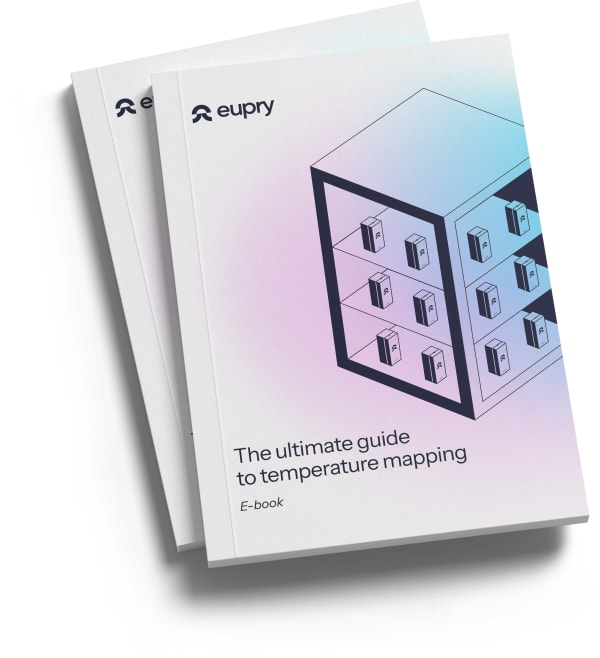
Get a complete temperature mapping guide
Download our thermal mapping guide which provides you with all the information you need to conduct an efficient thermal mapping study.
Which equipment do you need for temperature mapping?
Temperature mapping equipment is many things. From data loggers to advanced software, the tools you choose are pivotal for the success of your mapping project.
5 supplies and services for your temperature mapping:
1. Temperature sensors
The part of the devices doing the measurements. Temperature sensors are available as built-in or external.
2. Data loggers
Critical for recording temperatures during the mapping, the data loggers record the measurements made by sensors.
3. Calibration
Pre-calibrated loggers or professional calibration services ensure the accuracy of your measurements and compliance with industry standards.
4. Software for protocol design and data analysis
Digital tools to help design your mapping protocol, analyze data, and create and export audit-ready reports.
5. Training resources
Crucial for understanding the equipment and process.
What to look for in thermal mapping equipment?
Now we have covered which equipment types, you need for your mapping. But how do you know which specific solutions are the right fit?
Dive into our guide on the factors to consider when choosing the right temperature mapping equipment for your study.

5 typical temperature mapping mistakes
Thermal mapping is complex, and as a result, it is also quite prone to errors; errors that can be both costly and time-consuming.
Here are some of the most common mistakes – and how to avoid them:

9 temperature mapping mistakes to avoid
Delve deeper into these and more frequent mapping mistakes in our mapping mistakes checklist.
How often should you do temperature mappings?
If you are interested in the world of temperature mapping (and chances are, you are if you have reached this point), you have likely encountered the crucial question of mapping frequency.
This topic is a staple in thermal validation discussions – so what is the ideal mapping schedule for you? Let us explore.
Thermal mapping before use
First things first: Always perform a mapping before taking new equipment or facilities into use. This way you establish a baseline for comparisons in the future and, more importantly, ensure that the unit is functioning within your required limits before trusting it with your products.
Re-mappings on a regular basis
Temperature mappings are a point-of-time measurement of your unit’s performance – and since equipment declines, environmental conditions vary, operations expand, and procedures change, regular re-mappings are necessary to guarantee the continued reliability of your temperature-controlled environment.
Note: Did you know that there is a framework designed to eliminate the need for re-mappings? Continuous mapping is a practical alternative to the traditional disruptive nature of keeping up with traditional validation schedules.
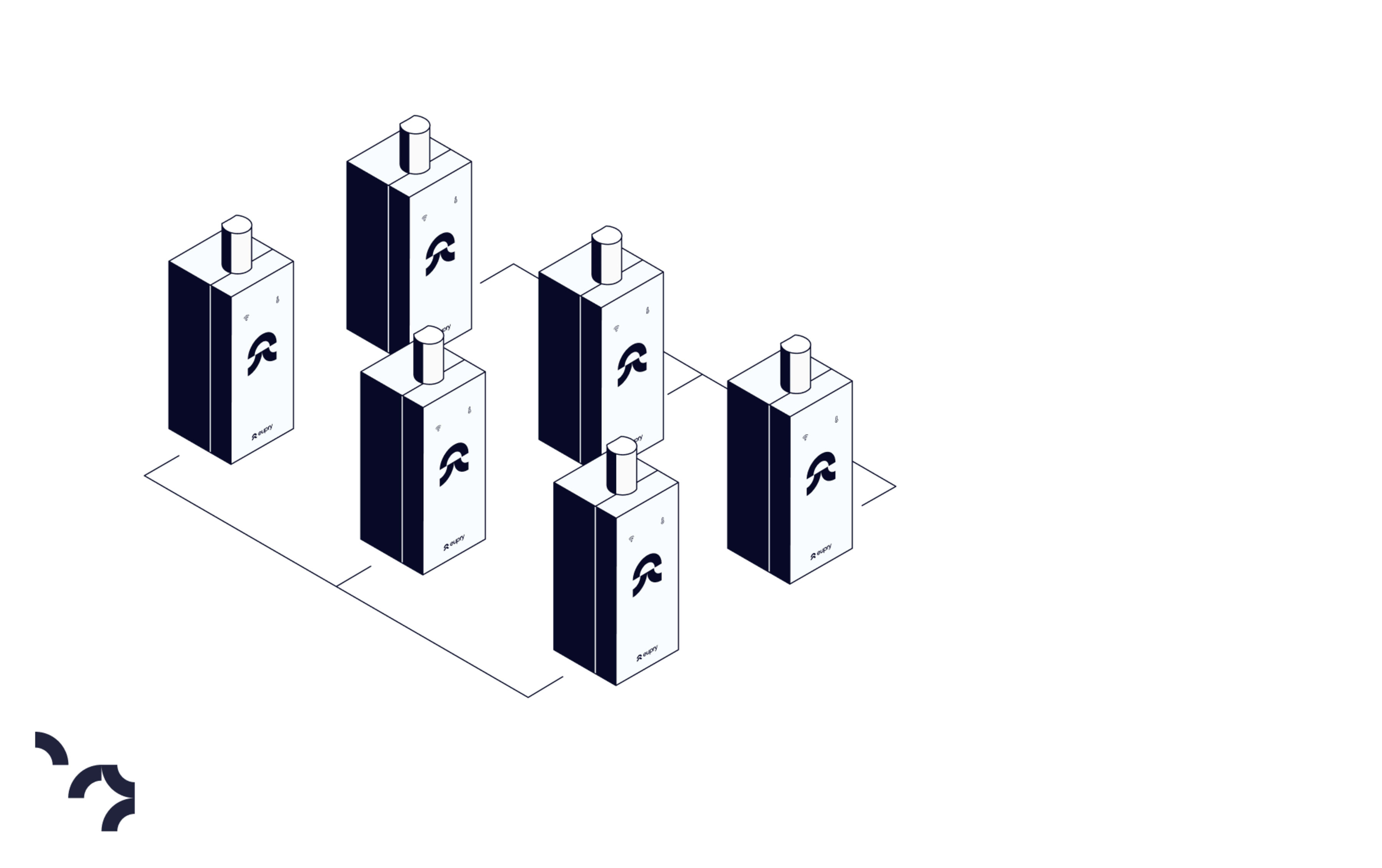
When should you do a re-mapping?
Unlike the simple nature of deciding whether you should do a mapping before taking your unit into use (you should), deciding when to remap is more complex.
The original “point-in-time measurement” is going to change the hour after you have done your mapping. So when has it changed enough for a re-mapping?
Use these steps to decide whether a new mapping is needed:
- Keep a change overview: Create and continuously update a list of all the changes you make to your facility or equipment, its location, or operational context.
- Periodic reviews: Reviews coupled with a risk-based approach are the key to solving the re-mapping conundrum – on a regular basis, review and perform a risk assessment. Investigate topics as:
- Are the changes impacting the performance of the facility? If yes, to what extent?
- How much has the stability changed?
- How much has the operation of the facility changed?
Also include general considerations about your setup like:
- What type of equipment is it? What is its typical lifetime?
- What type of regulatory requirements do you operate under? What do they say about the frequency of mappings?
- Document the assessment: Thoroughly document the rationale behind the risk assessments. This helps in defining when re-mappings are necessary and provides a clear audit trail for regulatory compliance.
- Evaluate the need for a restudy: Based on the assessment, you can now identify if a new mapping study is needed at this time. Most guidelines suggest that when you make major changes to your facility, you do a re-mapping.

4 general tips for deciding whether it is re-mapping time
- Industry standards and auditor criteria: While the specific frequencies vary, industry norms and audit expectations often range between every three to five years. A rule of thumb is therefore to plan for a new mapping within this interval – of course, taking into account equipment age and condition.
- Continuous monitoring: Keep an eye on trends shown by your temperature monitoring system and regularly inspect the equipment physically. Significant changes might call for re-mappings.
- Risk assessment is your key ally: Especially when there are no significant changes in processes or equipment, risk assessment is your best bet in determining the need for a mapping.
- Stay informed: Re-mapping is an ongoing topic among validation professionals. Stay up to date on evolving best practices in forums, industry groups, webinars, and other knowledge sources, as well as by engaging with peers to share insights.

Guidelines for temperature mapping of different types of units and facilities
From warehouses to ULT freezers – your temperature mapping approach should be tailored to the challenges and requirements of your environment. Here is what you need to consider for each storage facility.
Note: This section focuses on equipment-specific advice. For general temperature mapping best practices, refer to the earlier sections of the page.
Temperature mapping of refrigerators, freezers, and incubators
When temperature mapping a refrigerator, freezer, and incubator it is about ensuring stable temperatures in a smaller, more uniform space than for instance a warehouse. The number of data loggers needed typically ranges from 9 to 15, placed strategically in a grid pattern.
When it comes to equipment, freezer temperature mapping is unique in the way that freezers, especially ULT freezers, operate at low temperatures (often as low as -80°C). Mapping ULT freezers also requires external probes designed for extreme cold that can be mounted in a way that prevents any unwanted openings.
The nature of items stored in lab freezers and refrigerators are often critical, temperature-sensitive biological samples or pharma products which can dictate a higher level of precision in the mapping process – for instance, more restricted acceptance criteria.
Specific features of Eupry's mapping solution tailored to freezers, fridges, and incubators:
- Accurate readings in sensitive environments with our calibrated loggers.
- Specialized probes for extreme cold, ensuring precise measurements.
- Reliable results backed by ISO 17025 accreditation.
And much more. Read more about Eupry’s GxP-compliant mapping solutions.
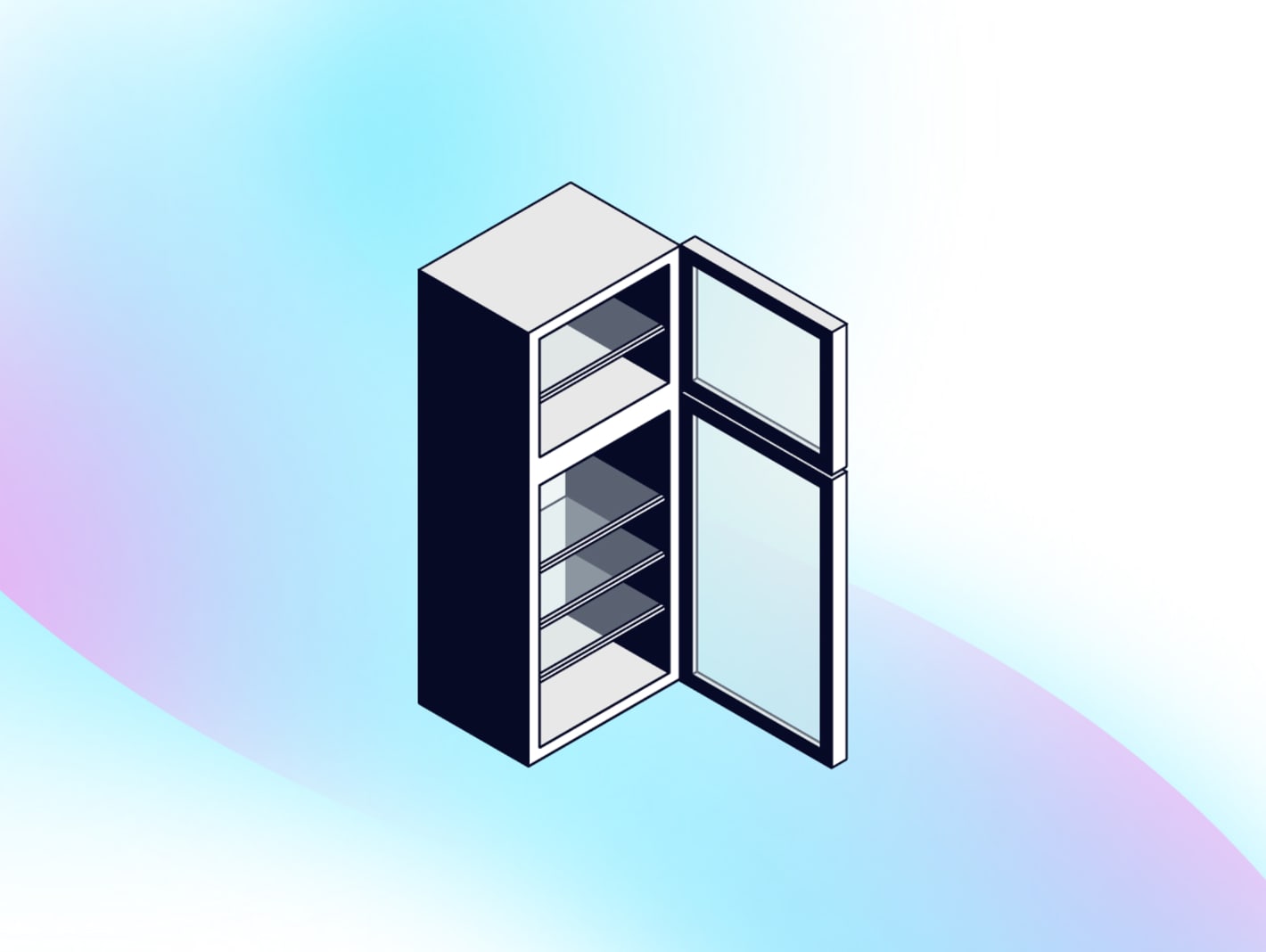
Temperature mapping of warehouses
Due to size, complexity, and environmental influences, temperature mapping in large storage areas like warehouses and distribution centers, is quite different from doing so in smaller units.
Learn more: Step-by-step guide: Temperature mapping for GDP pharmaceutical warehouses
All these factors and more should be accounted for in your strategy and protocol when performing mappings on larger storage facilities to ensure accurate monitoring.
Specific features of Eupry's mapping solution tailored to warehouses:
- Tailored recommendations from our validation team who can assist in assessing floor plans and defining the exact setup for your needs.
- Customized equipment, sensors, and calibration types tailored to your unique environment and logistical needs.
- Precise logger counts based on warehouse size, ensuring the necessary coverage.
- Consistent naming convention makes it easier to identify and locate specific devices.
And much more.
Learn more about how Eupry’s mapping solutions work for warehouses.
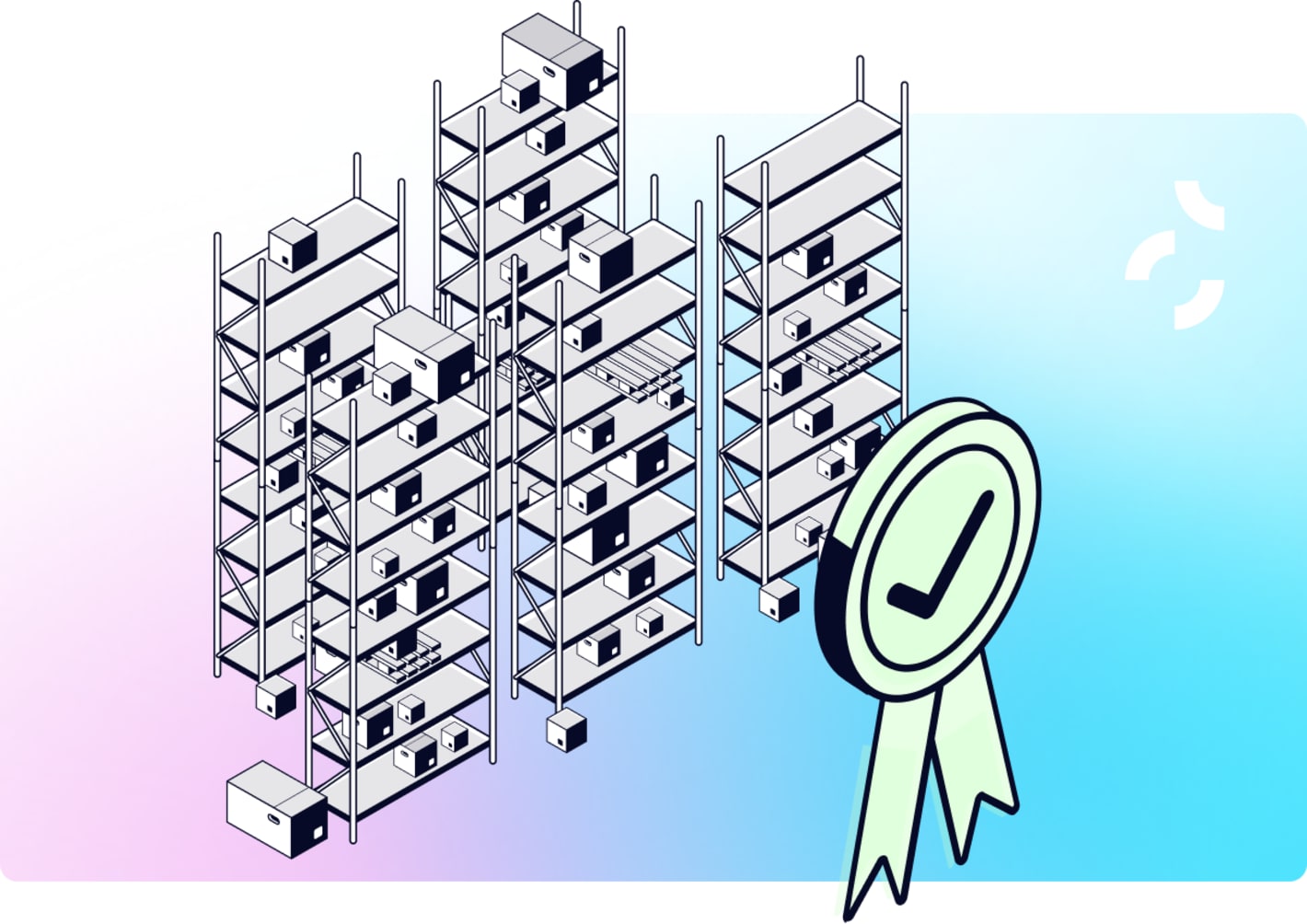
Temperature mapping of storage containers
Mapping storage containers presents unique challenges due to fluctuating external conditions and connectivity issues. Your approach should include considerations for these changing conditions and might require robust, battery-operated equipment for consistent monitoring.
Specific features of Eupry's mapping solution tailored to storage containers:
- Durable equipment suitable for variable outdoor conditions.
- Customized logger counts and placement advice tailored to each container.
- Eupry's quality department provides expert guidance for optimal setup.
And much more
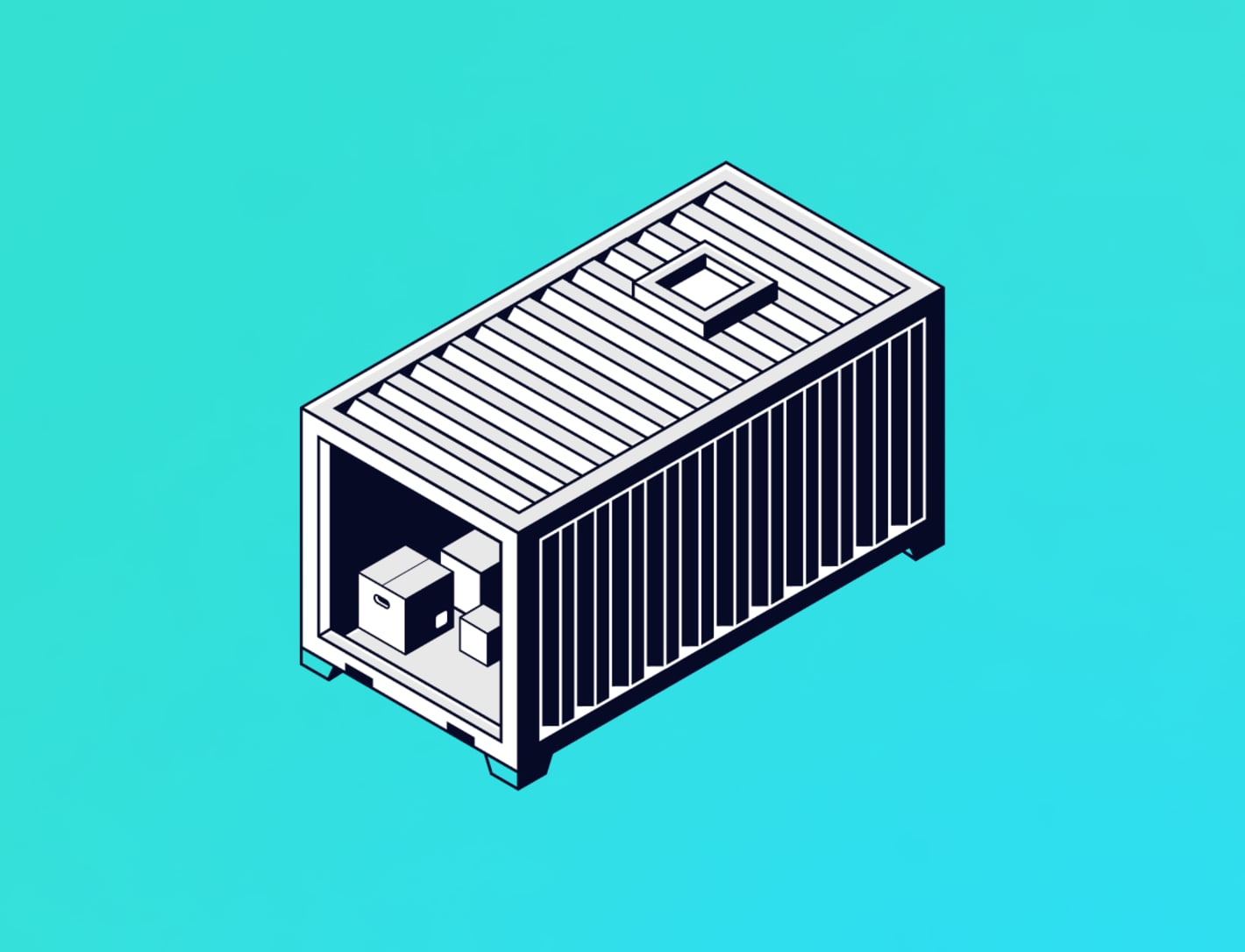
Temperature mapping of other equipment
Looking to map another type of storage unit or facility? The above covers a range of sizes and conditions, and hopefully, you can find your equipment requirements represented in one of these categories. Should you need guidance (with the mapping of any type of temperature-controlled equipment), you can also book a free 15-minute session with one of our validation specialists.

The key guidelines and compliance regulations of temperature mapping
In the realm of temperature mapping, regulations and compliance are not just a regulatory hoop to jump through; it is a commitment to quality and safety. Across industries like pharma, biotech, healthcare, pharmaceutical logistics, and beyond, the stringent standards and guidelines ensure product integrity from creation to delivery.
But navigating the landscape of temperature compliance can be tricky.
Based on your industry, markets, unit type, and product needs, the following standards are likely relevant for your temperature mapping study.
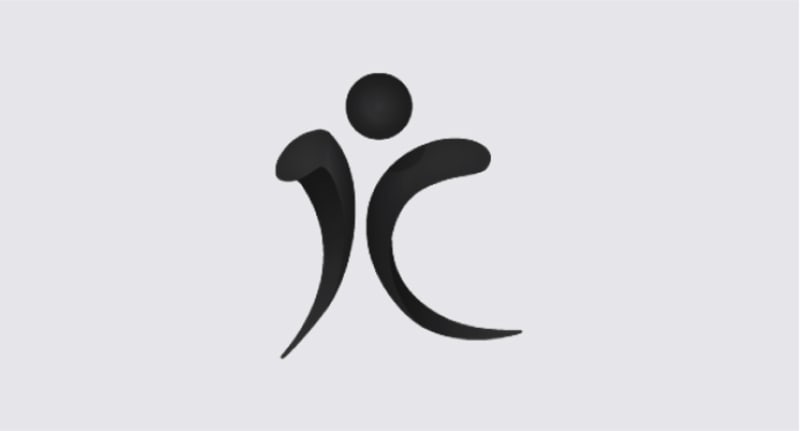
ICH's harmonized approach
The International Conference on Harmonisation (ICH) bridges geographic divides, particularly with ICH Q1A(R2), focusing on the stability testing crucial in pharmaceutical production.

EMA's European perspective
Parallel to the FDA, the European Medicines Agency (EMA) oversees the pharmaceutical arena in the EU, ensuring the safe storage and distribution of medicinal treasures.

ISO 9001's quality assurance
This standard is not just a badge; it is a promise of quality management. It encompasses vital temperature control systems, ensuring they're up to the mark.

USP's trusted protocols
The United States Pharmacopeia (USP) is the beacon for pharmaceutical handling standards. Their guidelines, particularly in Chapter <1079>, offer a roadmap for optimal storage and shipping.

cGMP – the manufacturing blueprint
Enforced by the FDA, Current Good Manufacturing Practice (cGMP) regulations are the backbone of quality assurance in manufacturing processes and facilities.
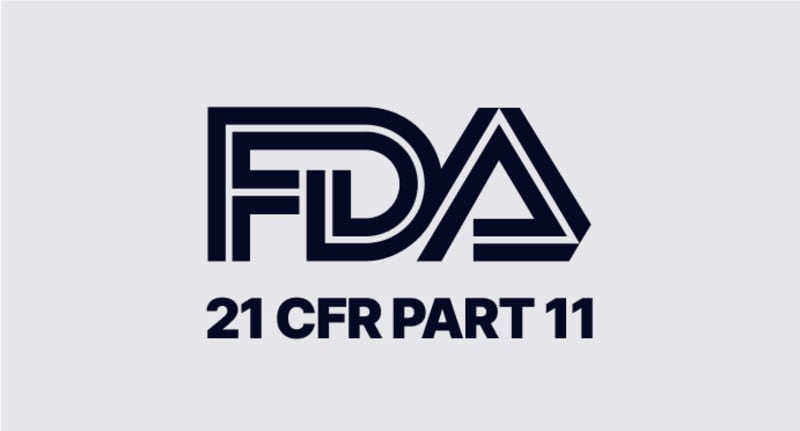
Digital compliance with 21 CFR Part 11
In our digital era, the FDA 21 CFR Part 11 regulation ensures the integrity of electronic records and signatures, an essential aspect of modern temperature mapping.

WHO's temperature mapping guidelines
The World Health Organization (WHO) champions the safekeeping of global health supplies on a global level. Their comprehensive guidelines are pivotal in the intricate dance of storage and transportation in varying climates. Supplement 7, 8, and Annex 8 are among the WHO guidelines that might be relevant to your mapping.

FDA compliance
The Food and Drug Administration (FDA) sets the gold standard for pharmaceutical and food safety in the US. Even though specific FDA temperature mapping guidelines do not exist (yet), many of the agency’s guidelines mention the process. The guidelines extend from Good Manufacturing Practices (GMP) to the nuanced intricacies of temperature-sensitive product storage and distribution (GDP). FDA standards will often also apply to companies outside of the U.S. when this company has any affiliation with partners, clients, or others in the states.

ISO 17025 calibration
The ISO 17025 standard is an international standard that specifies the requirements for the competence of testing and calibration laboratories – in other words, it relates to the accuracy of your measurements. Not all industries require accredited calibration, but the accreditation is relevant in industries where precise temperature control is vital. In temperature mapping, it ensures that the equipment used for mapping is calibrated and tested according to globally recognized standards, guaranteeing accuracy and reliability in measurement results.
Example: Which standards do WE use?
Even with this overview, it can be difficult to decipher which compliance standards to base your mapping study on.
So, as an example, we thought we would share the primary legal basis and guidance of Eupry’s mapping solutions and equipment.
Our temperature mapping solutions are mainly designed with a legal basis in:
The solutions are primarily based on guidance from:
- WHO mapping guidelines (Supplement 8: “Temperature mapping of storage areas”, Supplement 7: “Qualification of temperature-controlled storage areas”, and Annex 8: “Guidelines on heating, ventilation and air-conditioning systems for non-sterile pharmaceutical products”)
- The ISPE Standard “Controlled Temperature Chamber Mapping and Monitoring”
- DKD-R 5
- FD X 15-140 (French standard)
Tip! Find more guidelines and principles relevant to pharmaceutical temperature mapping here.
Need help?
Unsure which compliance requirements apply to you? Schedule a free session with one of our specialists and they will help clarify the requirements for your operation.
Why digitalize? The business case of digitalized temperature mapping
If you still rely on old-school, manual mapping processes, the business case for optimizing is significant.
Why temperature mapping becomes a bottleneck
Conventional, highly manual approaches to mapping can lead to increased downtime and costs, hindering your company's growth.
Manual processes are prone to errors and delays, require more time, and represent more risks of non-conformances and costly restudies compared to more modern, digitally-carried methods.

The hidden costs and time investments of temperature mapping
Whether you are expanding your business with new facilities or re-mapping existing ones, the mapping process restricts regular operations while happening.
As a result, time-consuming, manual mapping processes are an unnecessary blocker for your business’ progress.
The time-wasters and risks of traditional temperature mapping include:
- Data collection: Manually transferring temperature data from multiple data loggers.
- Documentation: Manual documentation and record-keeping of data.
- Data consolidation: Manually consolidating data from various sources.
- Analysis and reporting: Analyzing vast amounts of data manually.
- Lack of remote info: Time spent physically checking conditions, especially in large facilities.
- Repeat studies: Issues spotted too late due to no real-time monitoring and inaccuracies or data gaps in manual mapping, leading to the need for restudies.
- Staff training: Training staff on older, manual systems and procedures can be more complex than modern, automated solutions.
- Regulatory compliance: Ensuring compliance with evolving standards using old-school methods can require additional time for audits and reviews.
- Error-handling: Higher risk of errors and more time identifying and correcting these in manually collected data.
- Calibration delays: Calibration before, at the end, or even during the mapping, leading to idle time waiting for the calibration laboratory.
As a result, the (unnecessary) costs of traditional temperature mapping include:
- Missed opportunity costs: Undue manual work from staff, which takes away time from more business-valuable projects.
- Unutilized income: Prolonged mapping exercises, leading to unnecessary long operational downtime and lost profit.
- Avoidable fines: Potential non-compliance risks, which can result in costly penalties or damage to your brand reputation.

What does a modern mapping solution look like?
Embracing modern techniques and technologies can drive efficiency, cut unnecessary expenses, and ensure compliance.
But what should you look for in a temperature mapping solution to let you leave behind the manual mess?
Modern mapping solutions will include features like:
- Live monitoring: Letting you spot and act on issues immediately.
- Automatic data transfers: Removing the time spent on manual transfers.
- Digital reporting tools: To ease analysis and reporting processes and remove the risk of manual oversights.
- Compliance features: Easing the (continued) abidance with regulatory requirements.
- Pre-calibrated loggers: Removing the idle time of traditional calibration.

Frequently asked questions about temperature mapping
On this page, we have already covered some of the most common questions about temperature mapping. Should you have missed them, these are the questions you can find above.
- What is temperature mapping?
- Why is temperature mapping needed?
- How to perform a reliable temperature mapping
- Who should you include in your temperature mappings?
- Which equipment do you need for temperature mapping?
- What are the most common temperature mapping mistakes?
- How often should you do temperature mappings?
- How to perform temperature mapping of different units and facilities?
- What are the key guidelines and compliance standards for your temperature mapping?
Besides these, here are some of the most frequent questions our validation team gets about temperature mapping.

What happens if a temperature mapping study fails?
If a temperature mapping study fails, it indicates that the equipment or facility under study does not consistently maintain the required temperature range.
This can have several consequences:
- Product safety and quality risks: Failure to live up to the required temperature control can compromise the integrity and efficacy of temperature-sensitive products.
- Regulatory non-compliance: Many industries are governed by strict regulations regarding temperature control. A failed mapping study can lead to non-compliance with regulatory standards, potentially resulting in fines or sanctions.
- Operational delays: A failed study often necessitates a re-evaluation of the equipment. This can involve adjustments to the HVAC system, changes in storage practices, or even equipment replacement, leading to operational downtime.
- Cost implications: Retesting and resolving issues discovered during a failed mapping study can be expensive. Costs include equipment adjustments, additional studies, potential product losses, and decreased productivity during the re-evaluation period.
To address a failed study, immediate corrective actions, re-evaluation of protocols, calibration of equipment, and possibly a re-mapping should be conducted.
How do you know if you need to do temperature mapping at all?
To determine if your company needs to conduct temperature mapping, consider these points:
- Regulatory requirements: The main source – look into regulations or guidelines in your industry related to temperature control. Temperature mapping is often included in regulations for sectors like pharma, biotech, logistics, and healthcare.
- Product specifications: Assess if your products are sensitive to temperature changes.
- Risk management: Analyze the risks associated with temperature variations on your products' effectiveness, safety, or quality.
- Quality assurance standards: Review your internal quality control processes.
- Customer requirements: Some business clients might demand proof of proper temperature management, which temperature mapping can provide.
- Audit and compliance history: Reflect on past audits. If issues related to temperature have arisen, mapping could be a proactive solution. Industry benchmarks: Observe practices of similar companies in your industry.
By considering these aspects, you can make an informed decision about the need for temperature mapping in your company.
How can businesses minimize the impact of temperature mapping on regular operations?
There are several ways to reduce the impact that your mapping study has on operations.
- Plan temperature mapping during off-peak hours or facility shutdown periods to minimize disruption.
- Use wireless data loggers for efficient placement and data collection without needing extensive manual intervention.
- Educate staff about the mapping process to ensure cooperation and minimize operational interference.
- Coordinate with different departments to ensure smooth operation and minimal interference.
- Utilize real-time temperature monitoring to address any immediate issues without significant operational halts.
- Pre-plan the mapping strategy meticulously to avoid unnecessary repeats or delays.

What are the most common misconceptions about temperature mapping?
Common misconceptions about temperature mapping often lead to confusion and inefficiencies in maintaining compliance.
Some of the most common misunderstandings in temperature mapping are:
Misconception: Temperature mapping is a “set and forget” process:
- The reality: Things change. Operations, environments, regulations. As a result, temperature mapping is an ongoing process requiring regular review and updates. Also read: Continuous temperature mapping: A framework to eliminate re-mapping
Misconception: Only large spaces need temperature mapping:
- The reality: Temperature mapping is critical for all sizes and types of controlled environments, not just large spaces.
Misconception: Temperature mapping is too complex for in-house management:
- The reality: While temperature mapping is complex, there are both learning resources and user-friendly solutions (sometimes coupled with expert support) on the market that can make it feasible for you to manage mapping in-house. Psst… Get our ultimate mapping guide here – or learn more about Eupry’s mapping kit.
Misconception: Any data logger is sufficient for compliance:
- The reality: Using high-quality, calibrated data loggers will ensure you accurate, reliable results – and wireless data loggers will make your life much easier, offering both a flexible setup and live, remote monitoring.
What are the advantages of digital reporting tools in temperature mapping?
Digital reporting tools offer streamlined data analysis and reporting, enhancing efficiency and accuracy and removing the risk of manual errors. They facilitate quick and easy access to data, allowing for immediate review and decision-making.
Automated data compilation reduces manual errors and saves time. Advanced tools provide visual representations like graphs and heat maps for a better understanding of temperature distribution. They also enable secure data storage and easy retrieval, crucial for audits and regulatory compliance, and allow for data consolidation from various sources, offering a comprehensive view.

What strategies can be employed to reduce errors in your temperature mapping process?
Reducing temperature mapping errors can be done through several efforts:
- Thoroughly train staff involved in the mapping process to ensure correct execution.
- Use pre-validated and calibrated equipment to guarantee accurate measurements.
- Implement standardized protocols for consistency.
- Double-check mapping configurations and sensor placements.
- Utilize digital tools for data collection to minimize manual entry errors.
- Conduct regular audits of the mapping process to identify and rectify any procedural lapses.
- Encourage a culture of attention to detail and verification among team members.
- Regularly review and update the mapping process based on the latest industry standards and technological advancements.

What is the role of real-time monitoring in enhancing the effectiveness of temperature mapping?
Real-time monitoring in temperature mapping allows for immediate detection of temperature anomalies, enabling quick responses to potential issues and providing the option for adjustments during the mapping process, improving accuracy and avoiding the need for repeat studies.
It provides a continuous stream of data, offering a comprehensive understanding of the temperature profile over time. It aids in identifying patterns or trends that may not be apparent in periodic readings. Real-time monitoring also enhances the overall reliability of the mapping study and can contribute to reducing the duration of the mapping exercise. Last but not least, it facilitates immediate data analysis, which is essential for time-sensitive industries.
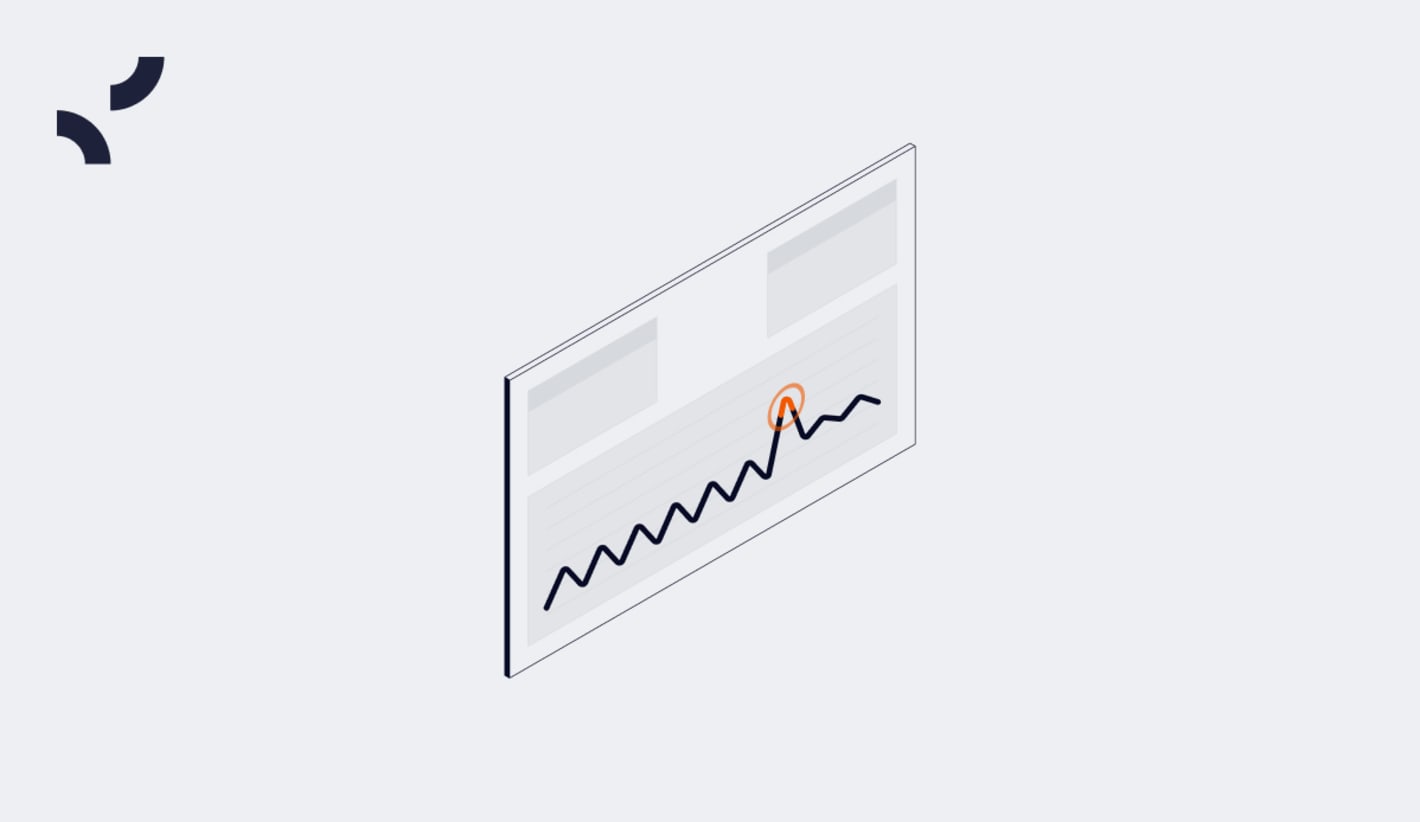
FAQ about temperature mapping
Frequently asked questions - and their answers - about temperature mapping in GxP-regulated industries.
5 ways to learn more about temperature mapping
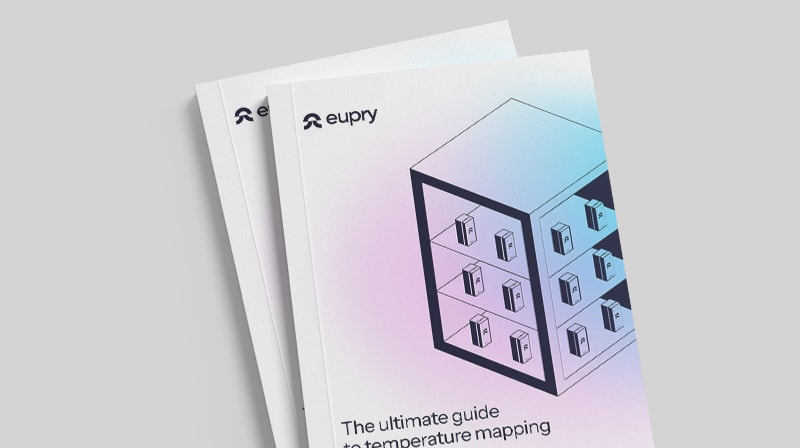
1. Get your mapping ebook
Master the art of precise, compliant mapping with the ultimate guide to performing temperature mapping.
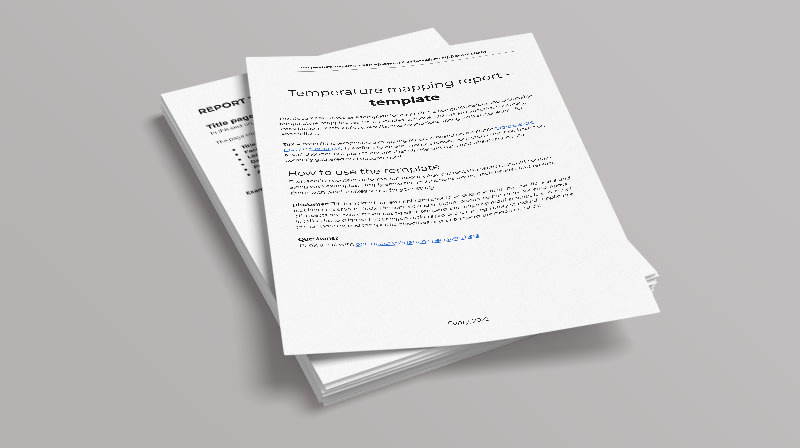
2. Get a temperature mapping report template
Develop a cohesive and actionable mapping report following this detailed blueprint.
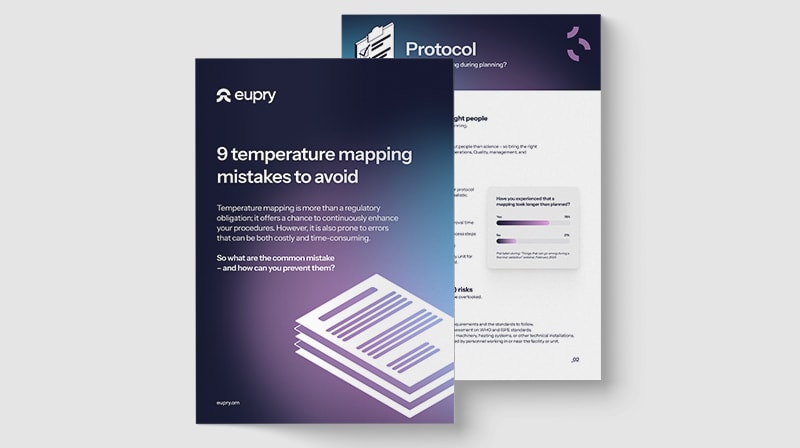
3. Get a mapping mistakes checklist
Delve deeper into these and more frequent mapping mistakes in our mapping mistakes checklist.
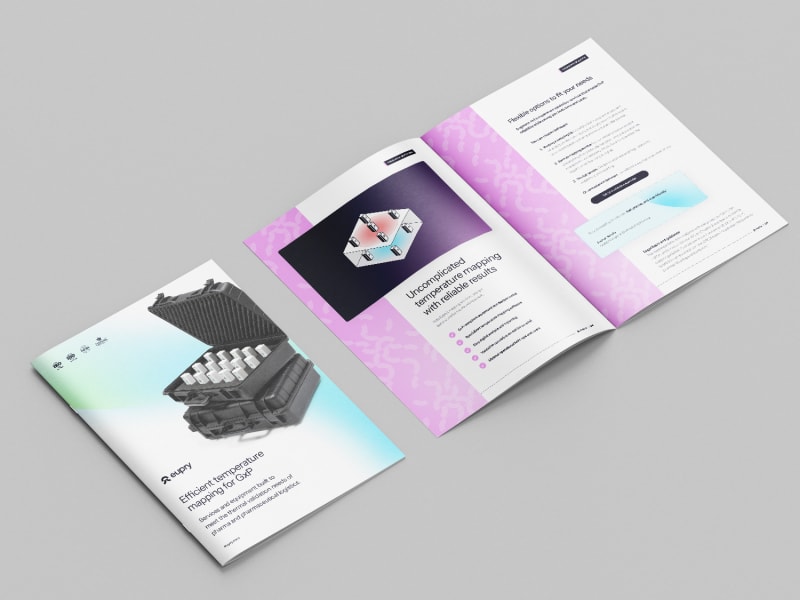
4. Get a mapping solution catalog
Uncomplicate your temperature mappings with digital reporting, GxP-compliant equipment, and validation experts on call. Dive into Eupry’s mapping solution in our solution catalog.

5. Talk to a mapping specialist
Have a talk with one of our validation specialists to help clarify your mapping needs and how Eupry’s mapping solution and kit can be tailored to your needs.
Lease a GxP-compliant mapping kit
- Rent all the equipment you need
- Live overview and digital analysis
- Pre-calibrated wireless data loggers


